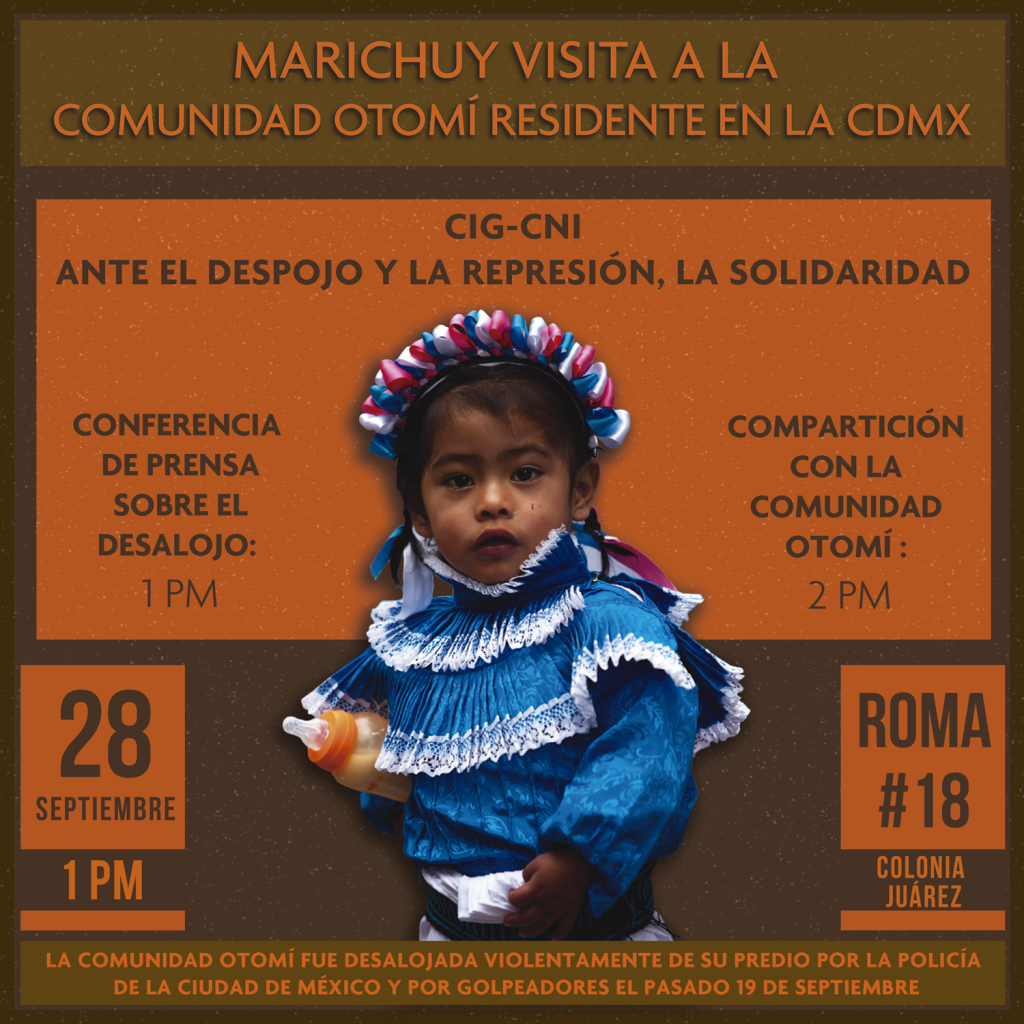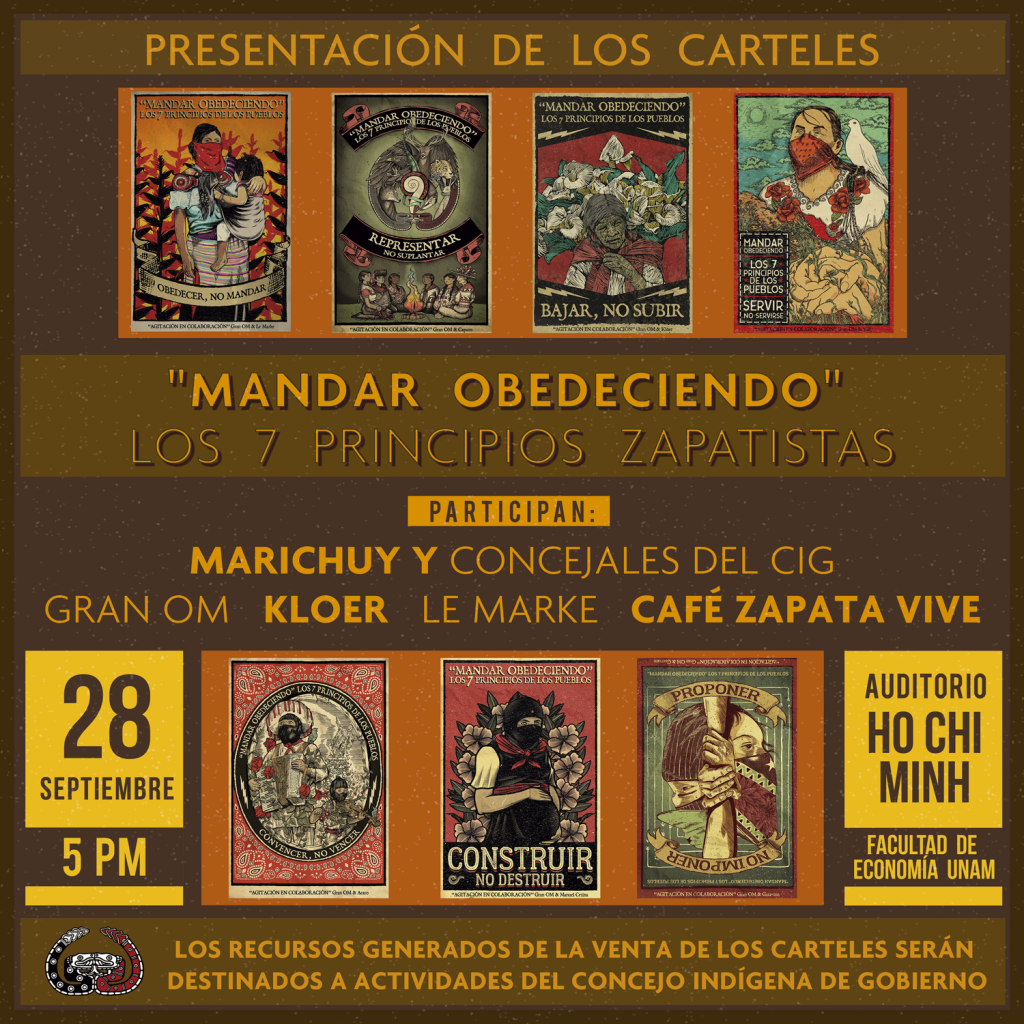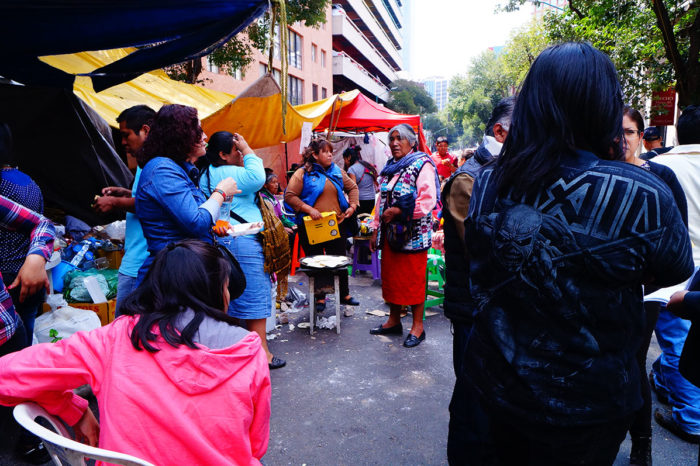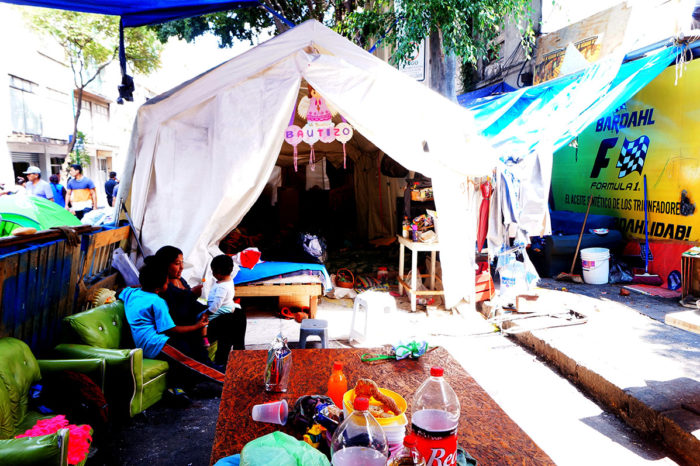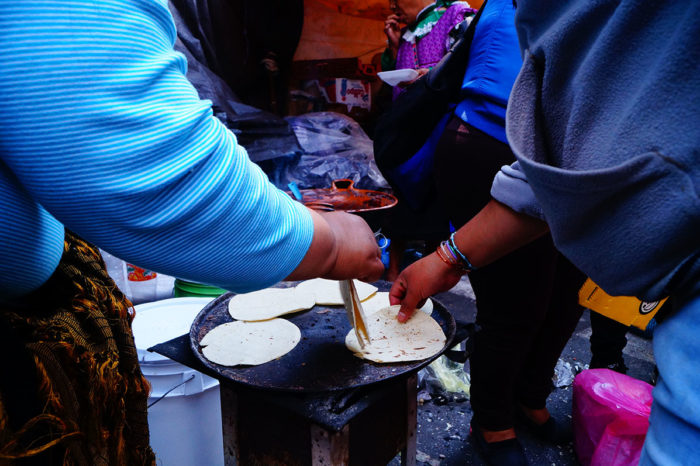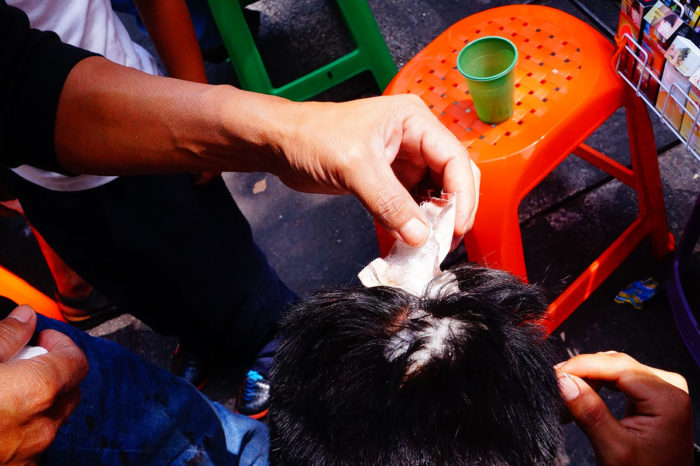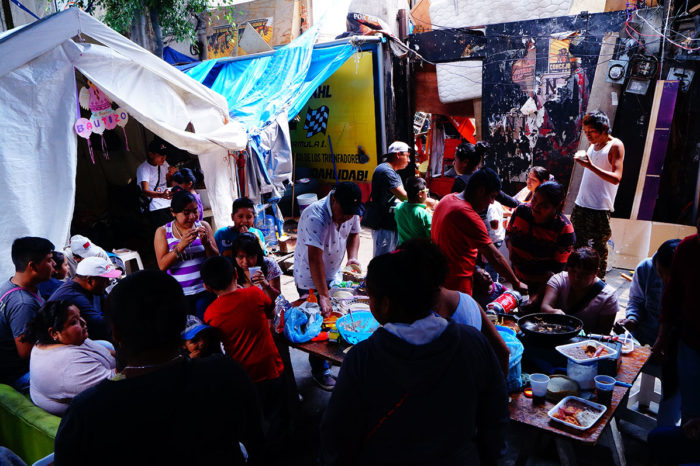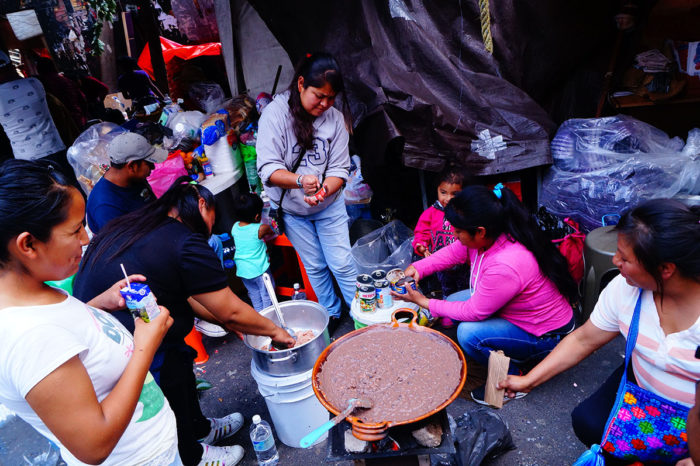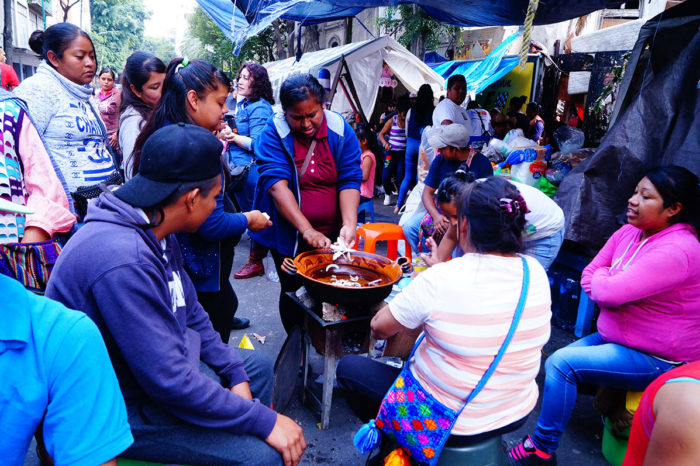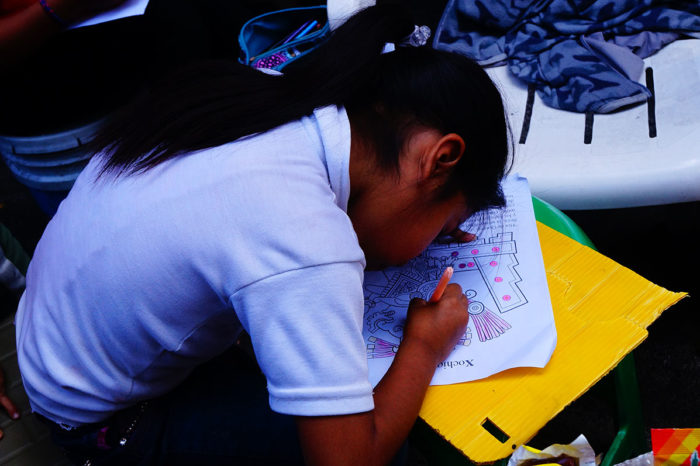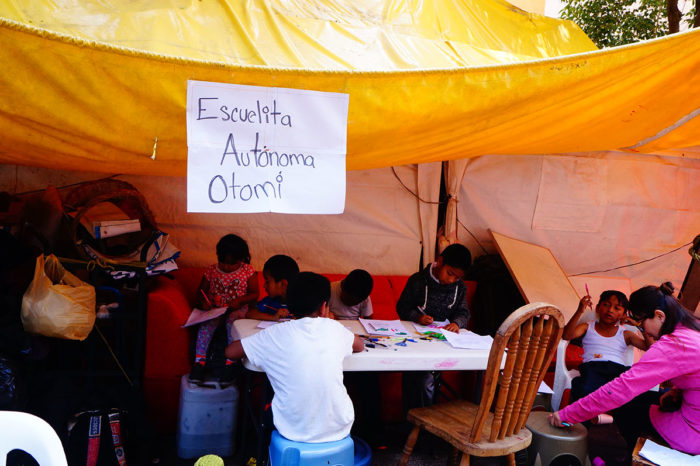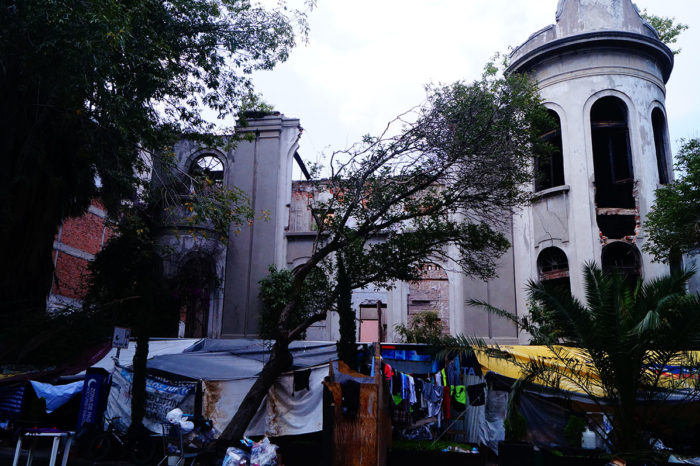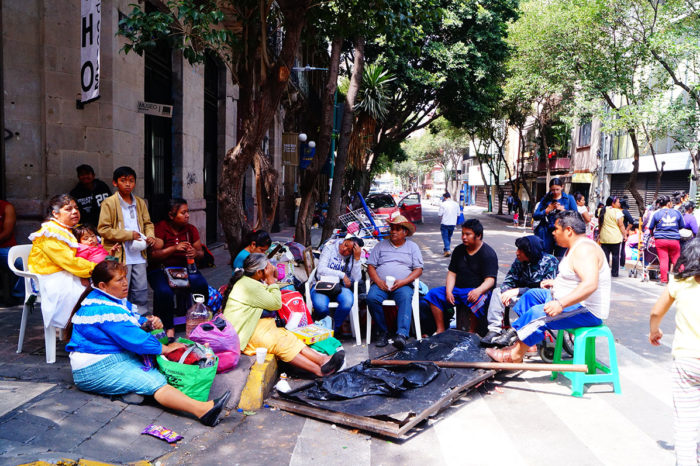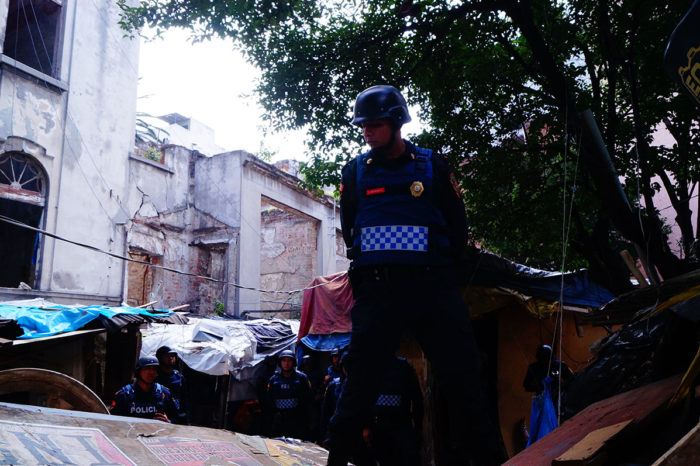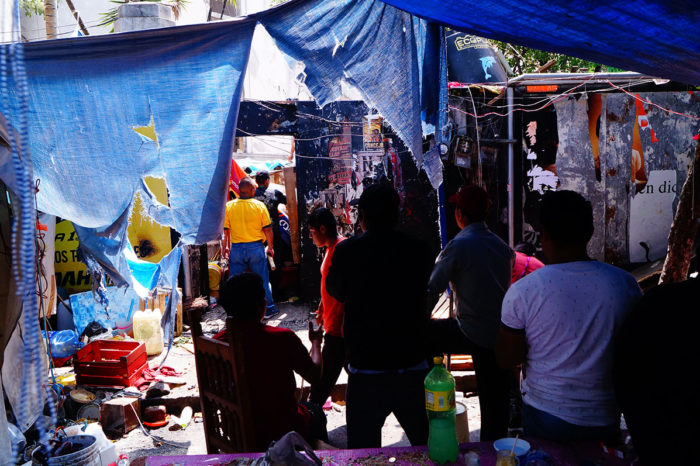
Concejo Indígena de Gobierno

(Español) Carta del Consejo Tradicional Kanienke’ha’ka para el CNI
1 de octubre de 2018
Muy buenos días o tardes compañeras y compañeros integrantes del Congreso Nacional Indígena, comunidades del territorio maya, comunidades en resistencia, y también saludamos y a su vez agradecemos a la comunidad del CIDECI UniTierra;
Esperando que se encuentren bien, este es un mensaje del norte, de parte del Consejo Tradicional Kanienke’ha’ka.
En este momento, el Consejo Tradicional Kanienke’ha’ka no puede venir a este importante encuentro y envían sus disculpas puesto que están en un periodo de un año de luto del fallecimiento del abuelo de la Casa Larga. Sin embargo, aquí en Chiapas tenemos un enlace representativo , para el Consejo Tradicional Kanienke’ha’ka y para nuestra Madre Tierra, para transmitir este mensaje para que todas las naciones lo escuchen y se unan en un esfuerzo común para revertir el genocidio que ha sido infligido sobre la Isla de la Tortuga, que es el nombre en que nuestros hermanos del norte llaman a este continente.
El Consejo les envía su amor y sus pensamientos. Están con nosotros.
El pueblo Kanienke’ha’ka es el verdadero nombre de la nación a la que se conoce como Mohawk, siendo éste un término dado por los colonizadores. Kanienke’ha’ka es el pueblo del sílex o pedernal, las piedras que al frotarse entre sí producen la chispa necesaria para empezar el fuego. El fuego del Consejo. Esta nación es la fundadora de la Confederación de Cinco Naciones Iroquesas en las tierras del Este de la Isla de la Tortuga. Las cinco naciones decidieron detener la guerra y evolucionar, dándole la autoridad a las madres, de la misma manera en que lo ha hecho la creación en todas las formas de vida. Las mujeres van primero. De tal forma, establecieron su constitución espiritual y política, llamada “La Gran Ley de la Paz”. La paz fue lograda mediante este gran esfuerzo que permitió a la Confederación de las Cinco Naciones vivir en paz por mas de 2,000 años, hasta que las fuerzas invasoras llegaron a la Isla de la Tortuga.
El Consejo Tradicional Kanienkehaka es el resultado final del viaje de diez mil años del Maíz, que se ha mantenido dentro de su Identidad Original a lo largo del genocidio de quinientos años en la Isla Tortuga. Su mensaje es simple pero verdadero, todos los pueblos originarios de la Isla de la Tortuga deben reconstituirse. Por simple que parezca, hay muchas complejidades en el proceso, que el Consejo presentará a través de las siguientes palabras.
La siguiente agenda de reconstitución está siendo puesta en acción mediante pequeños grupos sobre toda la Isla de la Tortuga. Es la iniciativa del Consejo Tradicional Kanienke’ha’ka basada en sus conclusiones después de una peregrinación para visibilizar todos los esfuerzos para que nuestras madres vuelvan a su lugar de autoridad que les corresponde, esto fue durante la primavera/verano de 2015.
La segunda fase de este proceso ha sido iniciada recientemente entre las naciones Innu y Kanienke’ha’ka. (https://www.facebook.com/longhouse.stuartmyiow/videos/451788688562186/)
Juntas, llevaran el mensaje de reconstitución en persona a lo largo de la Isla de la Tortuga, de nuevo, en la primavera-verano de 2020.
Hay algo muy importante a lo que nos gustaría hacer referencia; Fue a partir de la conformación del CIG y de la propuesta de proponer a Marichuy como candidata a la presidencia de México, que se inició en la Casa Larga un dialogo con el CNI, para transmitirles esta agenda principal y que todos los pueblos originarios restablezcan la Ley de la Paz y la creación, así como la urgente protección de la identidad de los mismos pueblos, quienes en el norte han sido cooptados por los gobiernos y los organizaron de una forma ajena a su identidad, en consejos tribales o consejos de banda, allá en el llamado Canadá y Estados Unidos. Como un estado de gobierno indígena impostor que ya forma parte del sistema corrupto y opresor que legitima tal violación a su identidad original y a la Madre Tierra.
La propuesta del CNI / CIG de participar con una pre-candidata a las elecciones del corrupto sistema del gobierno mexicano fue para el consejo de Kanhawake una alarma, no obstante ya comprendimos que su finalidad no era tomar la presidencia, sino unir fuerzas y fortalecer al CNI. Pues bien, éste proceso de Re-constitución que estamos formando, es una replica del proceso de 500 años de genocidio en reversa, tiene que ser dado por todos los pueblos originarios de la Isla de la Tortuga o como se dice en los pueblos originarios del sur, Abya Yala. ¿Por qué?, Precisamente porque éstos 500 años de violación han penetrado a todos los sentidos posibles y muchos consejos tradicionales indígenas ya no pueden reconocer o recordar quienes son ni recordar quienes eran, o en dónde están sus abuelos o sus hijos, ha sido una verdadera desconexión.
Es así que llamamos a nuestras identidades originales a escuchar este mensaje de la gente del norte:
La agenda de reconstitución es llamada:
¡Reconstitución de la relación entre los pueblos originarios dentro del hemisferio del cóndor y los pueblos originarios dentro del hemisferio del águila, la isla de la Tortuga!
El amor de nuestro pueblo por nuestros semejantes nos ha hecho buscar siempre la paz con los invasores extranjeros y resolver cualquier disputa entre nosotros a través de un diálogo pacífico, como con el “Tratado de paz del Cinturón de Dos Vías”, basado en la Gran Ley de la Paz y ofrecido a Francia, Holanda, Inglaterra y Estados Unidos para tratar de vivir en paz.
Sin embargo, a pesar de nuestro deseo de diálogo y de solución pacífica a las disputas, es hora de que reexaminemos nuestra relación con esta especie invasora que parece no tener límites en su corrupción o en su total desdén por toda la vida natural de nuestra madre Tierra.
Su odio abrumador por todas las personas naturales se ha extendido por todo el mundo y actualmente amenaza la existencia continua de todos los Pueblos Originarios y la Tierra misma. Es hora de que nuestra gente deje de aferrarse a nuestra creencia de fantasía de que estamos tratando con humanos como nosotros. Cualquiera puede abordar tal comportamiento y concluir que no es el comportamiento de los humanos. Entonces, en realidad, es nuestra falsa evaluación de esta situación lo que ha permitido que esa atrocidad se permee en nuestra existencia pacífica. Lo que ha permitido que tal perversión tenga lugar dentro de nosotros es la misma forma extranjera inyectada de “pensar hacia atrás” como el no nativo.
Puesto que estamos en estos momentos finales de esta “violencia contra la creación”, nunca sobreviviremos si caemos en la trampa de los colonizadores y nos convertimos en ellos, mediante simplemente pensar de la misma loca manera en que ellos piensan. La única forma de defendernos es la de traer de vuelta nuestra verdadera identidad, recuperar nuestros “Consejos Tradicionales” y restaurar nuestra identidad matrilineal: las mujeres son la autoridad, los hombres sólo representan bajo la autoridad de las mujeres; tenemos que reconstituir a nuestra Gente y a nuestras Naciones con base en nuestra realidad.
Debemos tener convenciones entre nosotros mismos, a fin de volver a unir las piezas de este rompecabezas para que podamos entender la imagen más amplia de lo que nos ha sucedido. Debemos reconstruirnos a nosotros mismos, nuestras Naciones, nuestros Consejos, es decir, los fuegos de Consejo de las mujeres, en conjunto con los fuegos de Consejo de los hombres, nuestras confederaciones y Grandes Consejos de acuerdo con nuestro conocimiento tradicional y la Gran Ley de la Paz. Donde ambos hemisferios se juntarían cada 50 años, en el Territorio Maya para nuestras asambleas generales anuales, donde, con las herramientas y la información correctas que vendrán a través de esta antigua convención, podemos reconstituirnos bajo la Gran Ley de la Paz; la ley de la tierra y de la creación, donde todos pueden actuar en consecuencia y vivir en paz una vez más. ¡Vamos a detener esta pesadilla!
Para lograrlo, debemos desvincularnos de cualquier herramienta de colonización, incluidas las imposiciones políticas, sociales, educativas, culturales, espirituales y especialmente económicas, y reconstituirnos como los verdaderos pueblos que éramos, como dadoras de vida y protectores de vida, unidos en Consejo para el bienestar de toda la creación y los Rostros aún debajo de la Tierra. Nuestras madres solían manejarnos y vivimos en paz durante miles de años. ¿Por qué seguiríamos el camino del colonizador y cometer asesinato y suicidio?
Los pueblos originarios deben reconstituirse. Nuestras hermanas y hermanos no nativos con quienes estamos comprometidos en una relación mediante el Cinturón de Dos Vías, nos ayudarán y nos protegerán como la cáscara dura externa del huevo mientras reconstituimos la vida en el interior. Todas las personas que entienden esta urgencia entenderán que necesitamos unirnos en convenciones, regionalmente, nacionalmente, internacionalmente, como solíamos hacerlo. Nos reuniremos en Territorio Maya, todos los pueblos originarios del sur y del norte, unidos en reconstitución para abordar nuestros problemas más urgentes, organizarnos y devolver la salud a la tierra y al pueblo. Con la ayuda de nuestras hermanas y hermanos no nativos que portan el verdadero espíritu de reconciliación, lo reconstituiremos. Estamos ansiosos de continuar nuestras energías en esta dirección, incluso si es en una plataforma virtual para empezar, lo que nos unirá físicamente en convención, en el futuro cercano.
¡Nuestras Madres de vuelta al poder!
Skennen kowa (sgana goa),
Gran paz para ustedes,
Stuart Myiow
Representante del Clan del Lobo
Consejo Tradicional Mohawk
Fb: Longhouse Stuart Myiow
Declaration from the Second National Assembly of the National Indigenous Congress and the Indigenous Governing Council
DECLARATION FROM THE SECOND NATIONAL ASSEMBLY OF THE NATIONAL INDIGENOUS CONGRESS AND THE INDIGENOUS GOVERNING COUNCIL
Listen here (in Spanish): (Descarga aquí)
To the Support Networks
To the Indigenous Governing Council
To the National and International Sixth
To the peoples of Mexico and the world
Sisters, brothers:
From the Second Plenary Assembly of the National Indigenous Congress (CNI) and the Indigenous Governing Council (CIG), held October 11-14 at the CIDECI-UNITIERRA, San Cristóbal de las Casas, Chiapas, we respectfully address the compañer@s of the CIG Support Networks as well as the peoples of this country and the world in order to discuss and together take new steps toward the construction of the new world that we all need.
We bring you this urgent message because as originary peoples our struggle against the profound sickness caused by capitalism means that we must weave life—this is the task given to us by our ancestors. With hope based in memory and in times to come, we sow and grow life everywhere we can, weaving ourselves collectively as a people and thereby weaving ourselves also as persons.




